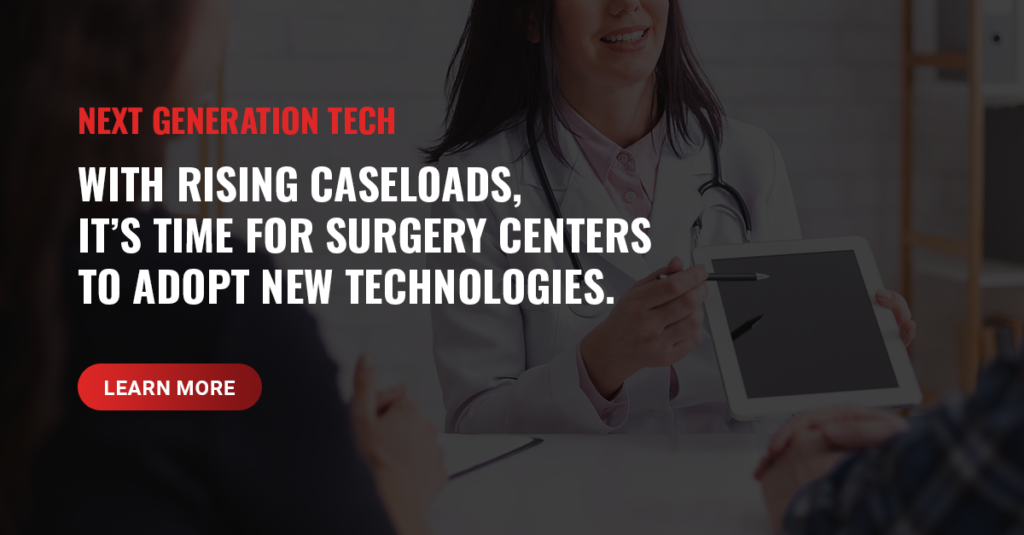To keep up with rising caseloads, it’s time for orthopedic ambulatory surgery centers to vet and adopt new technologies.

More patients than ever are opting for outpatient surgeries. In fact, according to a report by the Leapfrog Group, over half of all orthopedic surgeries are performed in surgery centers rather than traditional hospital settings. A more recent report from Deloitte shows that hospital outpatient revenue is growing faster than inpatient revenue — a trend that has been growing over the past few decades.
This influx of patients represents an enormous opportunity for Ambulatory Surgery Centers (ASCs) — but new challenges as well. ASCs have to keep up with patient demand while remaining efficient and profitable.
Thankfully, this new popularity of surgery centers comes at a time when technology in health is growing at an astronomical rate. The trouble is that many overburdened ASCs are struggling to vet and implement these new technologies.
Orthopedic EMRs? Some ASCS are Still Paper-Based
Even with the passage of the HITECH Act in 2009, which requires healthcare providers to use electronic medical records systems, the majority of ambulatory surgery centers still use paper for clinical documentation according to a 2021 report by KLAS Research. From what we’ve seen, in practice this often means ASCs take information from patients on paper, and then re-enter the data into their EMR. This leads to a greater number of errors in patient data.
Managing a high-caseload surgery center has no shortage of challenges — and so any delays ASCs might experience in finding and implementing more sophisticated workflow solutions are understandable. ASCs are dealing with an enormous amount of records and increasing case volume. And of course, they need to perform safe and accurate surgeries and may not want to change their systems too quickly.
Long-Term Benefits Overrule Short-Term Tech Growing Pains
Jessica, a materials manager in Texas, also points out that sometimes, the learning curve for implementing new technology leads to inefficiencies in the short-term.
“Some people get the process quicker than others, and the ones that take a bit longer, get frustrated,” Jessica says. “Sometimes this leads to wasting material due to user error.”
Even so, Jessica insists that embracing new technology is essential for a surgery center’s long-term growth and success. “It’s very important for surgery centers to keep up with new technologies,” Jessica says.
While many ASCs may be wary of new technologies, taking the time to implement and learn them makes an enormous impact over time. Emerging technologies can help improve surgical outcomes, reduce expenses, and automate processes that have typically been manual. If orthopedic ASCs don’t want to fall behind, they need to continually evaluate new solutions.
Let’s discuss a few of the technologies ASCs should be considering.
5 Surgery Center Technology Trends to Alleviate ASC Overwhelm
1. Robotics to increase surgery precision and bear increasing caseloads.
The implementation of robotics has taken a giant leap forward when it comes to health tech. While implementing this type of technology for surgery centers is expensive, it helps surgeons conduct less invasive and more precise surgeries for their patients. Healio recently published an article outlining surgeons’ views on implementing robotics into their practice. In this article Carlos J. Lavernia, MD says robotic technology can help surgeons reduce soft tissue damage in TKA surgeries.
“Definitely, every orthopedic surgeon needs to learn how to use these robots because in 5 years, maybe 10 [years], there is not going to be a joint replacement that is going to be done without a robot,” Dr. Lavernia said.
Robotics has the power to assist surgeons during surgery helping with navigation, precision, and ultimately giving surgeons more control over the procedure. With an increase in adoption, the prices and size of surgical robots will continue to decrease.
While some surgeons may still be skeptical, they need to pay attention to up-and-coming robotics technologies. Robotics can save costs in re-admitting patients due to the precision of this technology, and surgeons utilizing robotic assistance in the OR can perform surgeries faster, helping increase the caseload without overworking doctors.
2. Augmented or Virtual Reality for training and surgical prep.
Augmented reality allows a user to be in the physical world with virtual enhancements. In a virtual reality setting, the user is in a digital world and requires a headset. In other words, augmented reality (AR) enhances the physical world, while virtual reality is completely virtual.
Companies such as Osso VR have developed a virtual world specifically for surgical training. When surgeons or medical assistants use this software, they are transported into an OR where they can perform a simulated surgery. This is useful when preparing for a difficult case. It also allows surgeons to train alongside medical reps, and surgical staff to learn new techniques.
Implementing VR platforms in surgery centers helps surgeons learn new techniques from anywhere, and can help surgeries be more accurate due to practicing in a virtual realm.
AR can also provide major assistance to surgeons. During an operation, surgeons can access AR through goggles or glasses and can pull patient information quickly and easily during an operation.
3. AI, or artificial intelligence to assist with big data.
With the pace of AI developing like never before, ASCs need to be aware of opportunities to use AI to streamline data handling.
Each patient that walks into a surgery center creates a large amount of data. Electronic medical records, imaging files, and surgical notes must be organized and secure.
In addition, each surgery that takes place has dictation notes, charge sheets, and other records that have to be stored securely. By leveraging AI-powered software, preoperative planning software can generate surgical plans including segmentation, landmarks, and implant size. In turn, surgery time will decrease, again allowing for a higher caseload.
4. Software to automate workflows
Aside from streamlining workflows, another key outcome for ASCs is keeping patient records organized and secure. Having patient data easily accessible will help eliminate time-consuming and repetitive tasks.
Many believe the future of healthcare is personalized medicine. This means surgeons will need computers to collect data on each patient, their illness, treatments, and outcomes from each procedure. With this demand, many surgeons will see the implementation of patient wearables to help track outcomes and patient success. Setting up this type of infrastructure may feel like a massive undertaking, but once the digital infrastructure is created, ASCs can add patients and the cost of adding patients will be in a cost- effective way.
A workflow automation made specially for ASCs? Learn more.
5. Implementing software in ASC offices to reduce redundant tasks.
Most tasks performed in offices at surgery centers are manual, and require an extensive office staff to manage. However, using cloud-based software to digitize records is a game-changer when it comes to becoming more efficient and even eliminating office positions.
PRO-MAPP is an example of software that streamlines revenue management for surgery centers. This software will eliminate post-operative dictation, saving surgery centers up to $3,000 in monthly dictation fees. The software sends out coded operative reports immediately following the surgery, which allows the revenue cycle management to start the same day the surgery is completed.
Automated digital workflows allow surgeons and ASC executives to digitize their file system, resulting in more organized records, easy-to-find data, and efficient back-office recordkeeping.
One big advantage of implementing workflow automation software is that it accelerates cost savings. Tasks that once had to be accomplished by a team of people can now be accomplished with a smaller team and software.
To Stay Ahead of Patient Demand, ASCs Need to Adopt Emerging Technologies Now
Typically a traditional industry, the medical community is beginning to adapt to new trends and opportunities. Some of this change is attributed to COVID-19 and rapidly changing technology in every industry. However, the number of orthopedic surgeries to be performed each year continues to increase while the rate of surgeons graduating from medical school isn’t growing fast enough to keep up with demand.
Today, surgery centers and hospital administration have a choice to implement new technologies. Soon it will be a necessary means to keep up with patient demand. These healthcare technology trends support faster, more accurate surgeries — but will also manage costs in the long-term. Implementing new cloud-based software does require training and implementation, but the long-term positive effects will aid in smoother billing and less busy work.
Are you an orthopedic surgeon or administrator who’s ready to embrace new technologies and streamline your workflows? Learn how PRO-MAPP can help.
